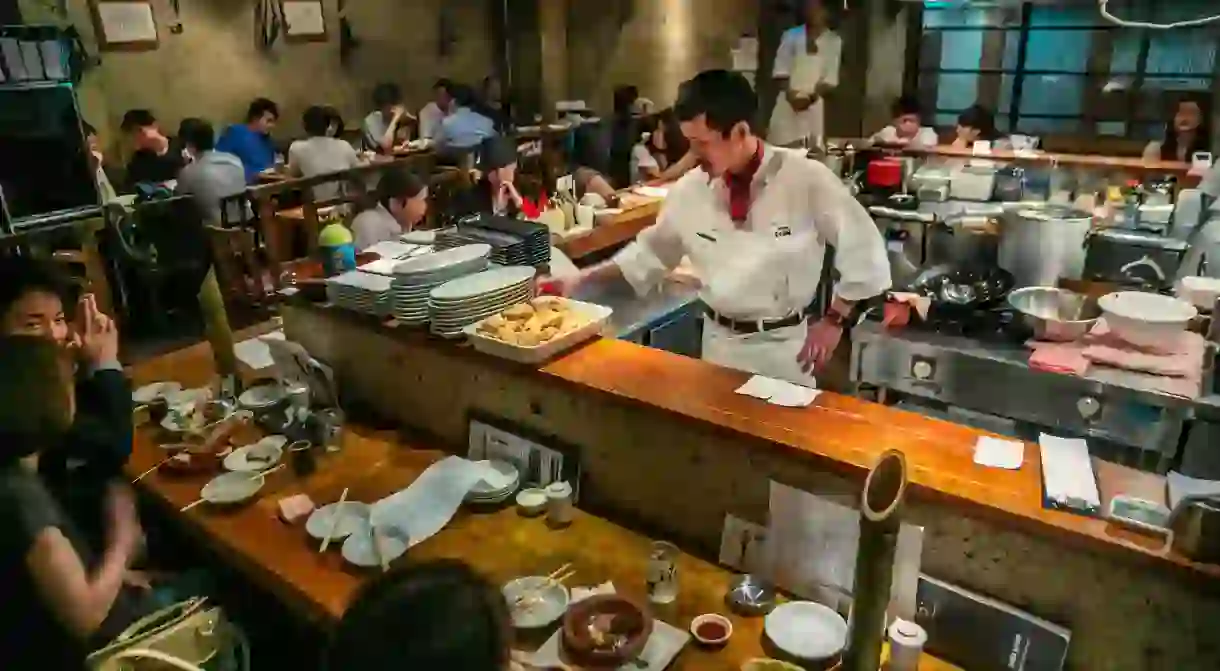Etiquette Tips For Visiting Japan

Japan is known for its highly structured society, governed by an unspoken set of strict etiquette rules. This can be daunting for newcomers, but fret not – the Japanese don’t expect outsiders to know all the rules of the game, although a basic understanding is helpful. These Japanese etiquette tips will stand you in good stead. Did you know you can now travel with Culture Trip? Book now and join one of our premium small-group tours to discover the world like never before.
Handling Chopsticks
Possibly the number-one rule of Japanese etiquette for tourists, hence why it tops this list: there are two places to lay your chopsticks down on the table: either flat across your bowl, or leaning on the chopstick rest. Never leave your chopsticks sticking straight up in your rice bowl and never pass food from chopsticks to chopsticks: both of these mimic funeral rituals and are considered disrespectful. If you want to pass food to someone, use the back end of your chopsticks to place it in a dish for them.

Don’t Be a Picky Eater
The Japanese hate to be wasteful, and picking things out of your meal to leave aside (bones excluded) is considered disrespectful. It offends not only your host but also the farmers who cultivated the vegetables and the animals who gave up their lives for the sake of your dish. It’s also polite to sample a little from each dish on the table.

Don’t Fill Your Own Glass
You’ve probably heard the expression kampai, which is the Japanese equivalent to cheers. But what else do you know about drinking alcohol in Japan? For starters, do not fill your own glass – it implies that your host or dining partners are ungracious. Wait for someone else to fill it, and be sure to return the favour. If possible, try and raise your glass a little off the table while it’s being filled – this is very formal Japanese etiquette, however, so if you’re just dining with friends it’s best to wait and see what everyone else does first.

Say Itadakimasu!
A meal at a Japanese table is not a free-for-all. Politely wait for everyone to be seated before saying itadakimasu (“I humbly receive”) together. At the end of the meal, be sure to thank the cook by saying gochisō-sama deshita (“That was a great feast”). Your host will definitely appreciate this gesture.

Give Up Your Seat
When using public transport, be sure to give up your seat to those who need it more. Be careful not to use those seats reserved for the elderly and disabled, as well as pregnant women and those with small children. Many pregnant Japanese women stay so slim that they must carry pink tags to signify their right to reserved seating – so keep an eye out for them as well!

Don’t Walk and Eat
In general, walking while eating or drinking is frowned upon, although it is acceptable in the case of some foods, especially during festive occasions. You’ll see most people carrying their takeout in secure bags to eat later, or finishing their drinks while standing at the vending machine. And in Japan, they’ve taken bad public transport etiquette one step further: drinking and eating are actually prohibited, so you won’t ever have to discreetly grimace at the waft of someone’s freshly opened katsu curry box.

Forget the Tip
Tipping is not common practice in Japan. Restaurants or other service providers will usually have an additional fee set by their establishment built into the bill. If you do feel the need to give some money to your home-stay family or to tip an especially helpful maid at your accommodations, place the money in an envelope first – it’s bad manners to place a tip directly into someone’s hand.
Use the Tray
Many stores will have small trays in which to place the money when paying for an item, rather than handing it directly to a cashier. If you spot such a tray be sure to put the money in there, because disregarding it is somewhat rude. Also keep in mind that most people pay with cash and few places accept credit cards besides the “superstores” or expensive restaurants and hotels. Always be sure to carry enough cash with you to cover your expenses.

Present Your Card
Rules for tourists are numerous, but if you’re in Japan on business there are even more rules to remember. If you have a business card or meishi, present it to your new acquaintance at the beginning of your meeting (bonus points for having it printed in both Japanese and English). Hold the card in both hands when receiving. Either place the card face up on the table in front of you for reference, or tuck it safely away in a business card holder – nowhere else. It’s also okay to ask how to pronounce someone’s name at this point (but never write on the card in their presence)!

Take Off Your Shoes
Always take off your shoes when entering someone’s home – this is standard Japanese etiquette. A Japanese home will always have slippers for guests to wear, so you don’t have to worry about getting your socks dirty. Some temples and restaurants might also ask patrons to remove their shoes before entering.

Sit Properly
It’s very common in homes, and even in some traditional restaurants, to sit on the floor around a low table to eat, rather than in Western-style chairs. For formal occasions, both genders kneel down and sit up straight. For more casual situations, women may sit with both legs to one side, and men can sit in the cross-legged seated position that many cultures are familiar with.
Did you know – Culture Trip now does bookable, small-group trips? Pick from authentic, immersive Epic Trips, compact and action-packed Mini Trips and sparkling, expansive Sailing Trips.













